Filling Time and Having Fun: The material culture of children's lockdown deposits
In the first of our guest blogs, Dr Ceri Houlbrook takes an imaginative journey into the future, asking how children's play during the pandemic could be interpreted through the physical, material objects they've created at this unusual time.
Imagine that the year is 2050. Now think optimistically and imagine that physical museums with tangible collections still exist. One such museum is designing an exhibition on children’s creative responses to COVID-19 and The Lockdown of 2020-21. It’s a period people look back on with a mixture of sadness and nostalgia. Children of the mid-21st century are told it was a time of isolation and fear, but also a time of coming together, of community, of little kind gestures. With schools and leisure facilities closed, it was a time of the home, of waving through windows, of yet another walk. Children were cut off from relatives, friends, teachers, but in their isolation they found creative, tangible ways to connect, share messages of hope – and even have fun.
A team of three future curators are hoping to encapsulate all of this in the confines of a display cabinet. Assembling around a table, they survey the objects collected so far.
“So, what do we have?” one asks.
The second curator gestures to a white piece of paper, surprisingly well preserved after thirty years. Cascading across the A4 sheet are small footprints, probably belonging to a toddler, in curved rows of red, yellow, green, and blue.
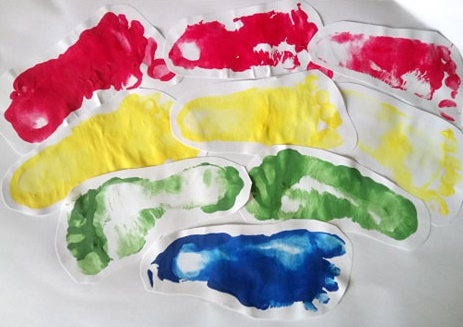
Photo: Ceri Houlbrook
“A rainbow picture,” the curator explains. “Children made them, using various media, and displayed them in the windows of their homes. Families turned it into a bit of a ritual, trying to find rainbows when they were out on their walks. It started in Italy, with rainbows accompanied by the slogan ‘andrà tutto bene’.”
“Everything will be all right.” The third curator chips in with his translation.
“And it spread to other countries,” the second curator continues. “In the UK, it was also accompanied by messages of thanks to the NHS. Queen Elizabeth II mentioned them in her televised speech.” _She reads the quote from her notes. “The moments when the United Kingdom has come together to applaud its care and essential workers will be remembered as an expression of our national spirit; and its symbol will be the rainbows drawn by children.”
“Nice quote. We’ll include it in the object label,” the first curator decides, before moving onto the second object: a small blue teddy bear wearing a crocheted face mask.
“In New Zealand, ‘teddy bear hunts’ were another popular family activity. People would put teddy bears in their windows, sometimes in different poses every day, and children would go on the ‘hunt’ for them while out on walks. Like rainbow pictures, it spread to other countries.”
“And the mask?” the first curator asks.
“Sometimes face masks were added to children’s objects: Halloween pumpkins, snowmen, chocolate Easter bunnies.”
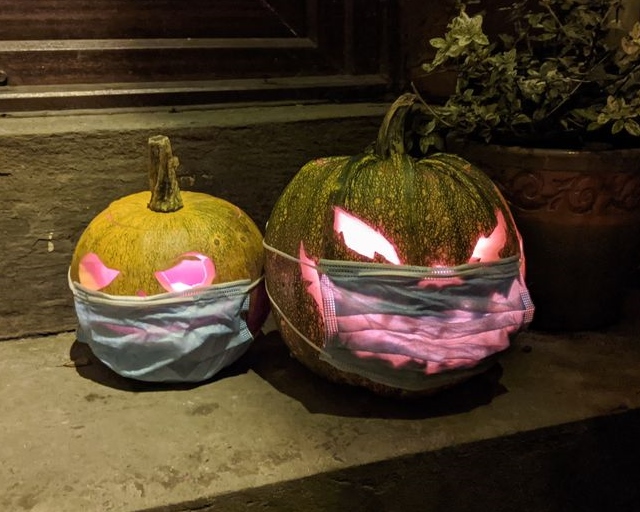
Photo: Ceri Houlbrook
The first curator looks bemused. “Why?”
The second curator hazards a guess. “A way of normalizing it for children?”
“Just for the fun of it,” the third curator – the only one old enough to remember The Lockdown – informs them.
The second curator then points to another object: a smooth pebble painted white with pink flowers. “Pebble painting as a way of sending out messages of hope was popular in the US years before COVID, with something called the Kindness Rocks Project. But it really gained popularity during The Lockdown. Families would paint pictures and patterns on pebbles, sometimes with written inspirational messages, and then they’d hide them somewhere outside. Other families would find one, maybe post a photo of it on social media, and then re-hide it"
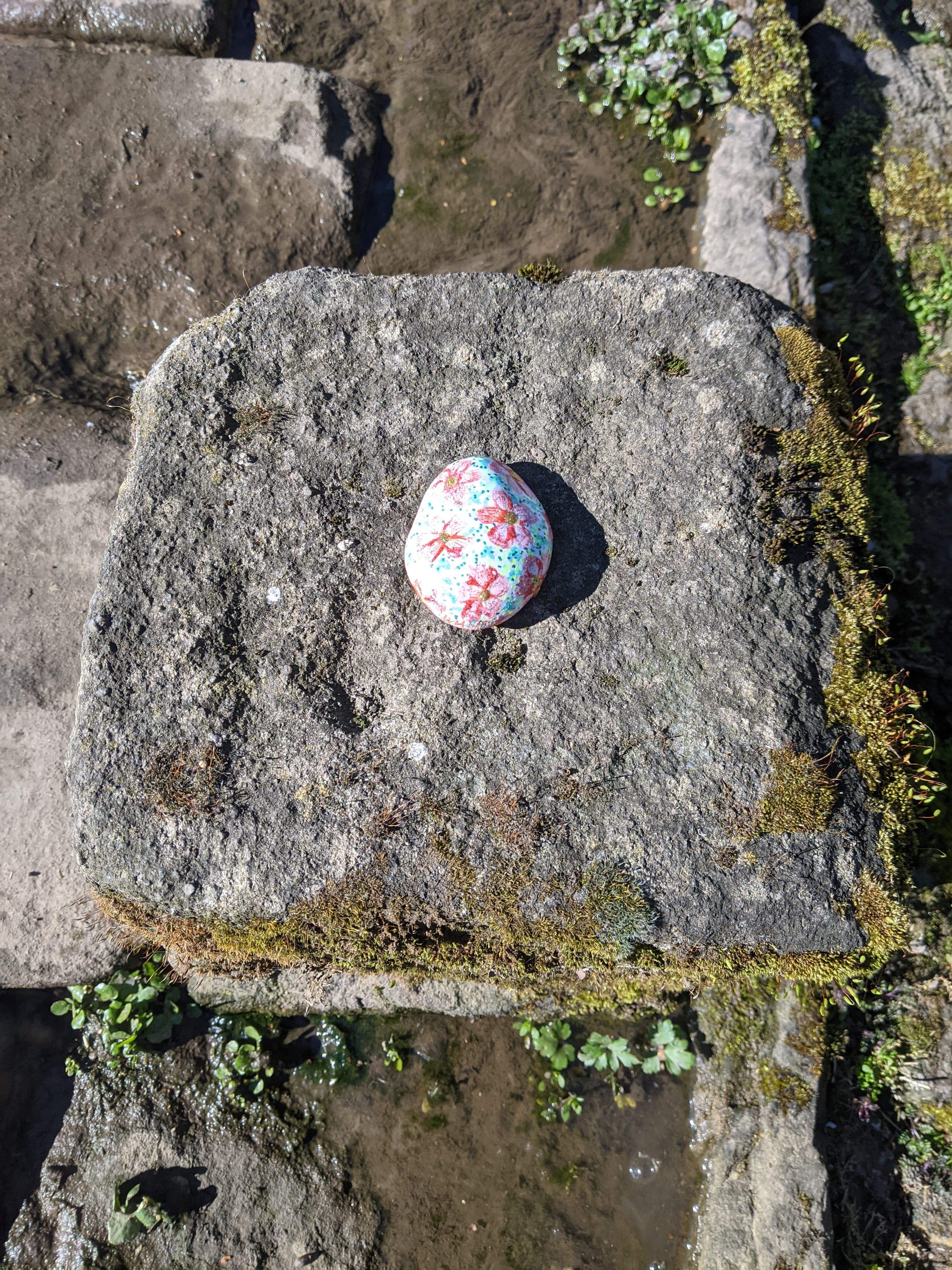
Photo: Ceri Houlbrook
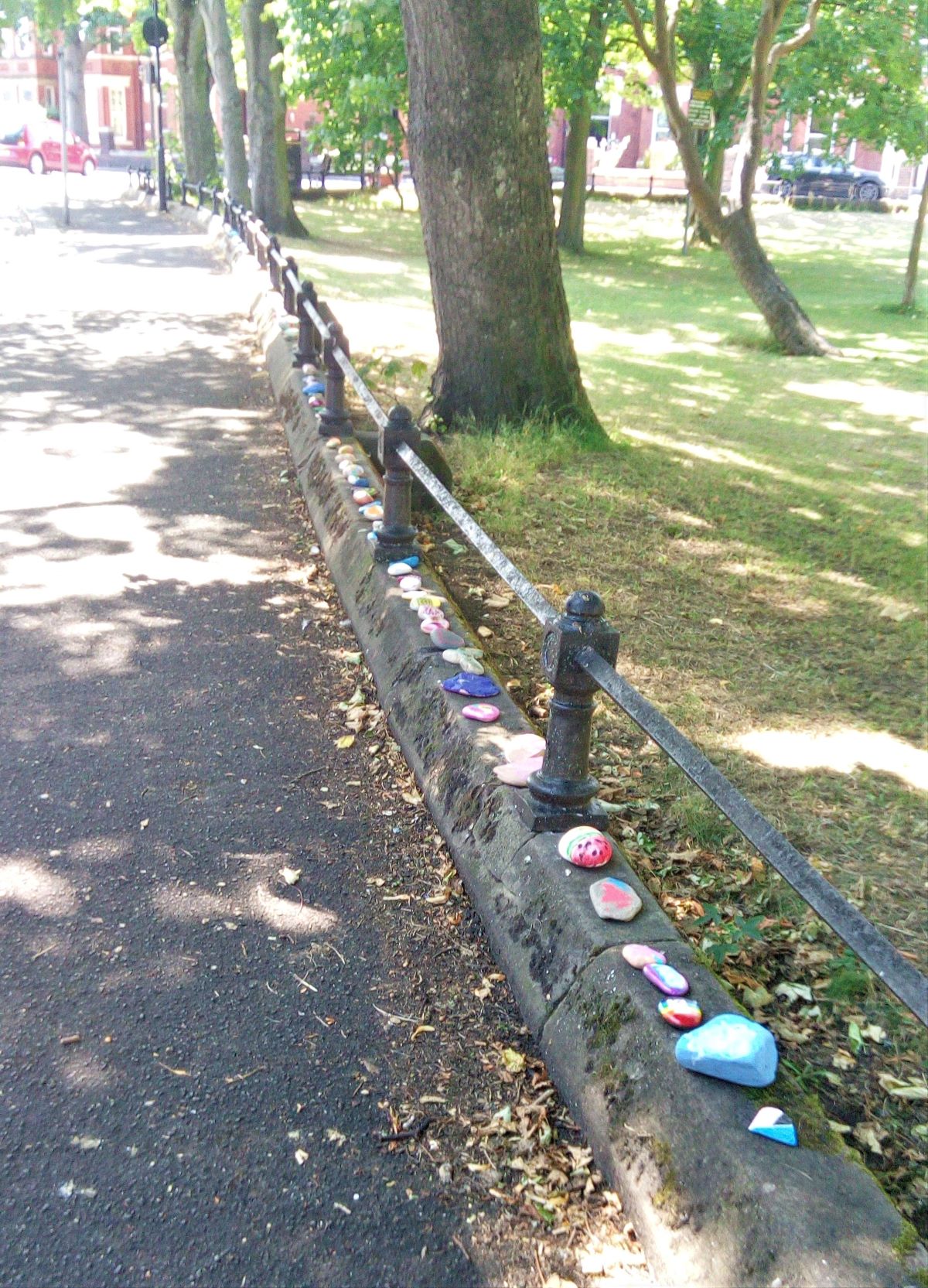
Photo: Chris Stell
“Whole assemblages would build up,” the third curator adds. “Long lines of pebbles would form as members of a community contributed their own. These became known as ‘rock snakes’ or ‘pandemic pythons’.”
The first curator nods her understanding. “Source more pebbles and we’ll form a pandemic python for the display. Maybe it could even be an interactive activity: provide the materials and invite our younger visitors to paint their own pebbles.”
“Great idea.” The second curator makes note of this before gesturing to a photo. “This is a picture of a wishing-tree from Bristol Downs. Throughout The Lockdown, families would attach signs, ribbons, and other objects to trees, so that people would see them as they passed. Again, it was a way of sharing messages of hope at a time when people couldn’t physically come together.”
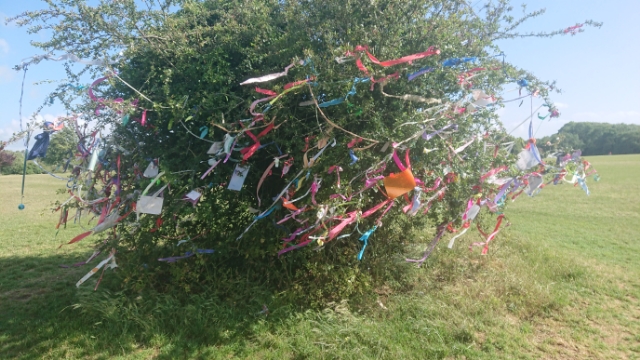
Photo: Andrew Elson
“Plus they made family walks more fun,” the third curator recalls wryly. “Trust me, there were a lot of family walks during The Lockdown.”
“And here we have an example of yarnbombing.” The second curator motions to a series of crocheted pieces. They bear felt images of figures enjoying outdoor leisure activities: sunbathing on a beach, walking through a forest, a sailboat. “These were wrapped around a signpost in Hinckley during The Lockdown. An adult probably did the crocheting, but perhaps children glued the figures on.”
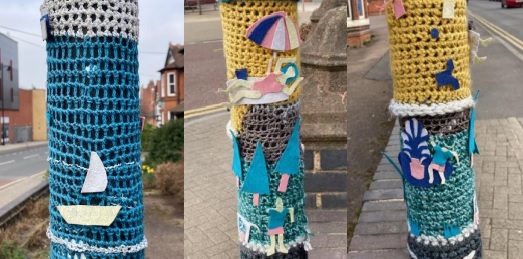
Photo: Andrew Marlow
“Another ritual deposit designed to connect a family to the wider community in a time of isolation?” The first curator posits.
“Another form of children creatively contributing to the broader narrative of The Lockdown?” the second curator theorizes, making another note.
“Sure, sure,” the third curator shrugs, remembering. “But in other words, just another way of filling time and having fun.”
Dr Ceri Houlbrook is a Folklore and History Lecturer at the University of Hertfordshire, where she teaches on the Folklore Studies MA. Her primary research interests are contemporary folklore and the material culture of ritual practices and popular beliefs. She has published previously on the British coin-tree phenomenon and, most recently, on the history and heritage of love-locks: https://berghahnbooks.com/title/HoulbrookUnlocking/loc



